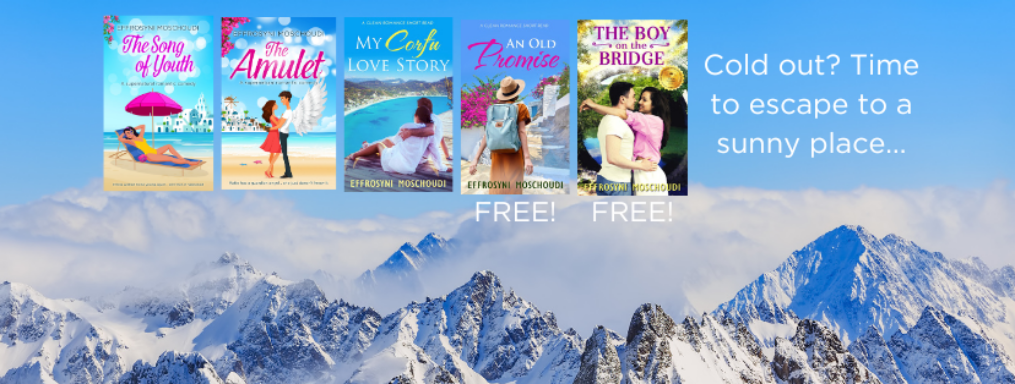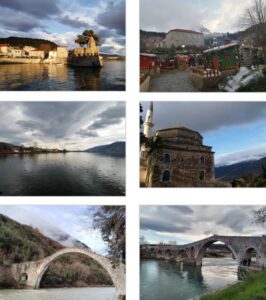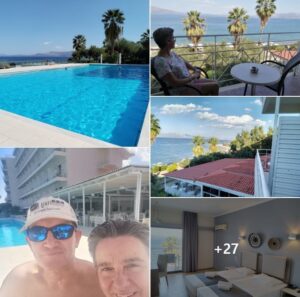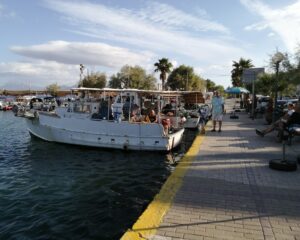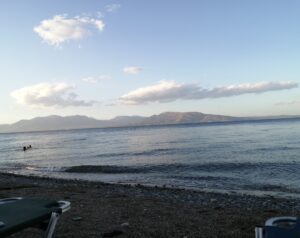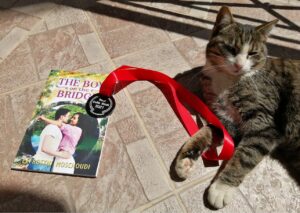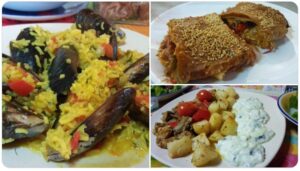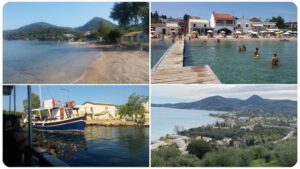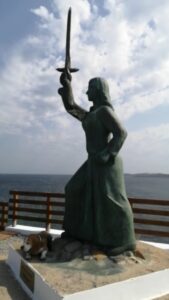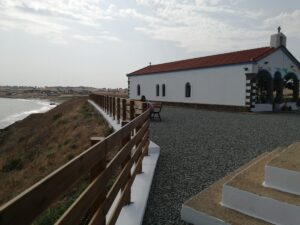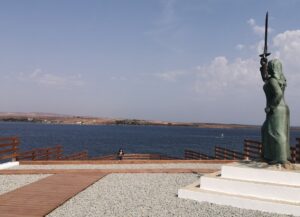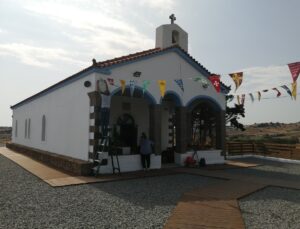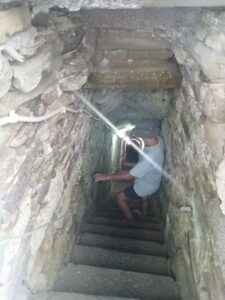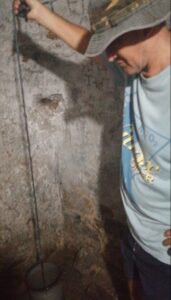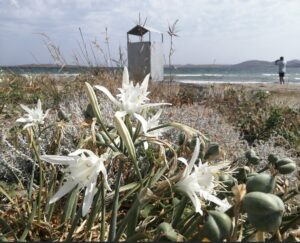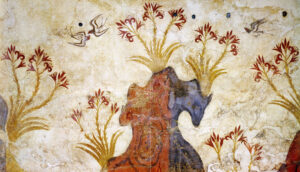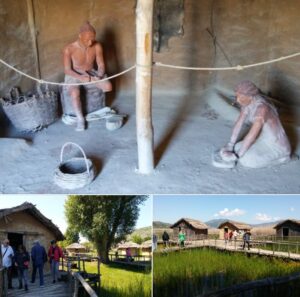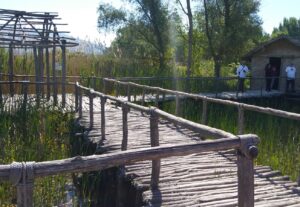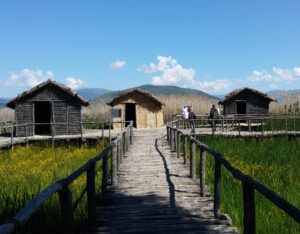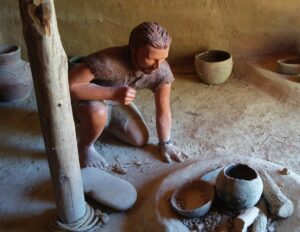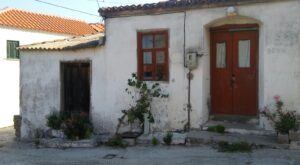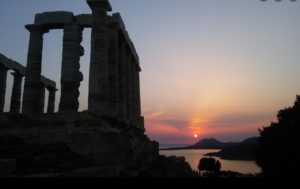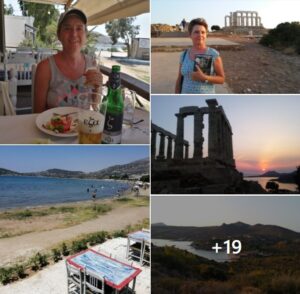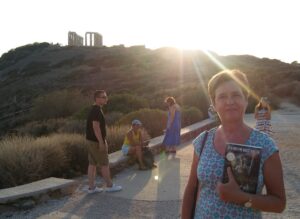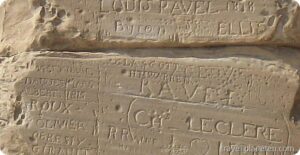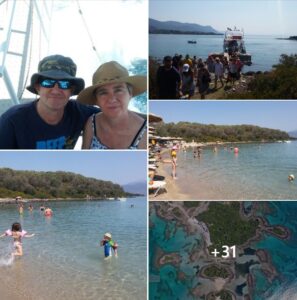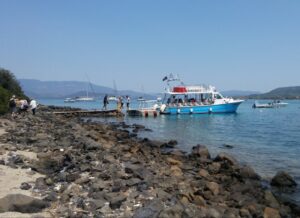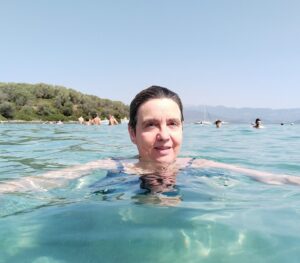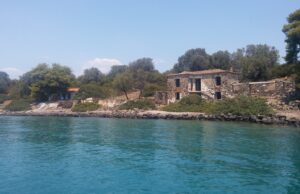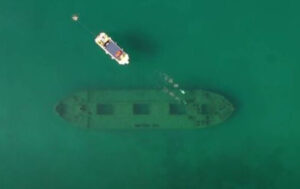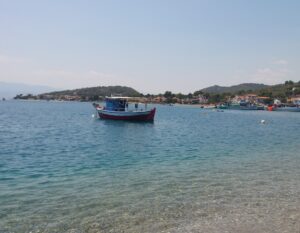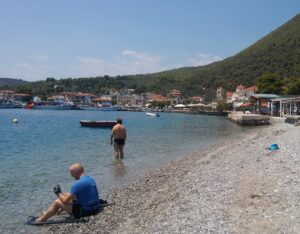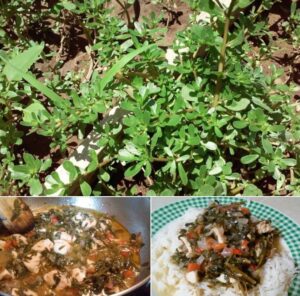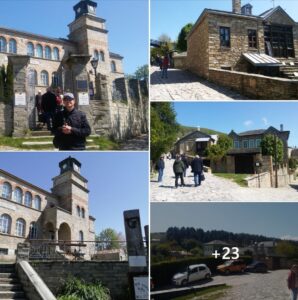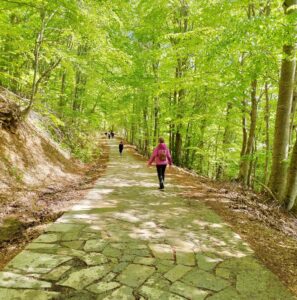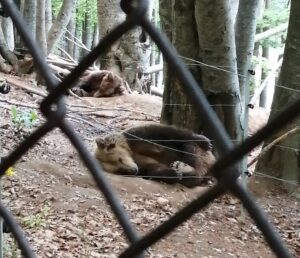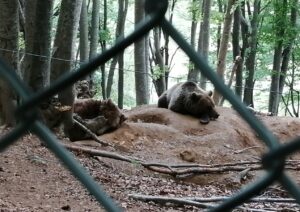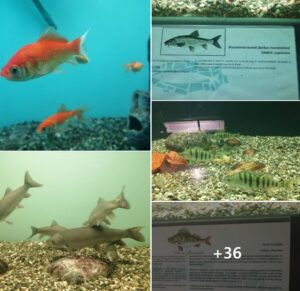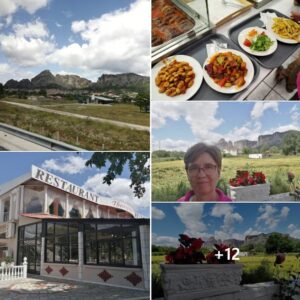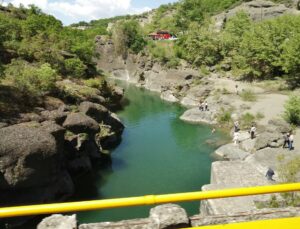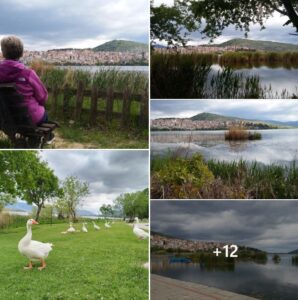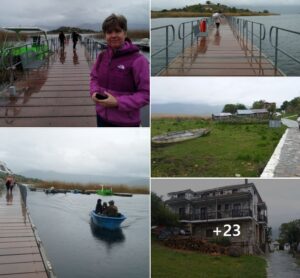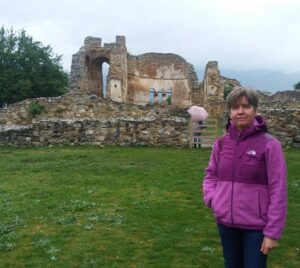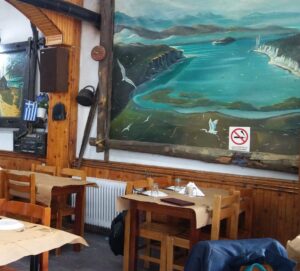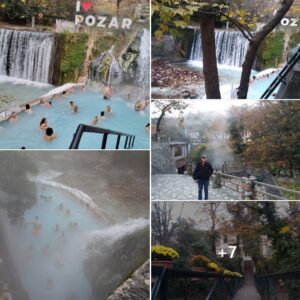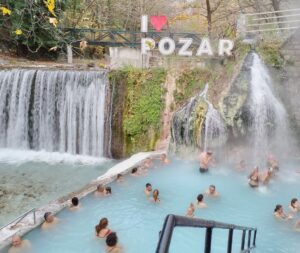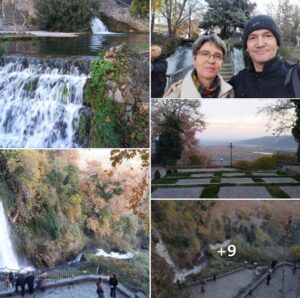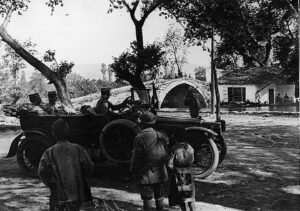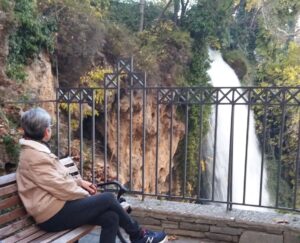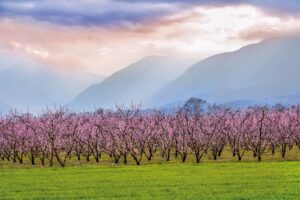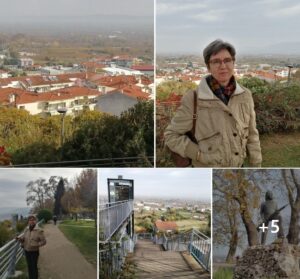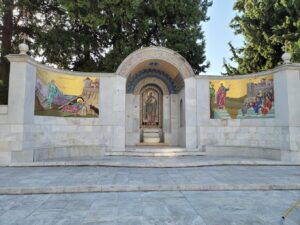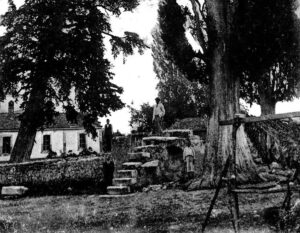More travel reports to come from alluring parts of Greece!
You know me! I cannot commit to staying at home too long. My heart always yearns for the next escape. I have always been an eager traveler, but in the recent years, I have been deprived of this great passion of mine.
Family health issues, first with my beloved Corfiot grandmother, then both my parents, who got ill with cancer in succession, forced me into assuming the role of carer that didn’t allow me to have almost any travel experiences at all for about 7 years.
Sadly, all the aforementioned members of my family are now gone. It’s tough to be left behind with all the memories, good and bad, and I am sure many of you can relate, but I continue to count my blessings every day as I have a lot to be thankful for – a husband who is loyal, funny, and who supports me on my writing journey, for one. And he is a fellow keen traveler to boot!
It’s been a busy year travelwise, which had the added benefit of allowing me to escape from the harrowing memories of the past few years and my own sense of mourning.
Traveling opens the horizons of the mind. It unravels and refreshes it and lifts the soul. If you are mourning whatever in your life, I highly recommend traveling to you as an escape, if you can do it. Even one-day escapes or extended time spent in nature often, especially in the company of other people, can have the same effect.
Andy and I had our latest travel escape at Christmas. It was a 4-day coach tour to Epirus. We stayed in Arta (well known for its legendary stone bridge – bottom right in the picture above).
Each day, we went to a different place. We were enthralled to visit Tzoumerka for the first time, a mountain area near Arta very reminiscent of Zagori as one will find there stone bridges and enchanting villages with beautiful stonemasonry.
We also dedicated a day to explore Ioannina, a stunning city built on a lake, that has a lot of history, mainly from the Otthoman Empire. Last, we visited Messolonghi and the absolutely breathtaking Nafpaktos. The latter made our heads spin with its quaint beauty. The old fort on the tiny port made our cameras sing. I am going to have a hard time picking which pictures to show you from that place. They are all postcard-perfect!
So, all this is to come in the next couple months.
But, I am not going to leave you without some sunshine today. Nuh-uh! This is the beginning of a new year, after all. We are halfway between a summer gone and the next summer to come, so I thought some sunny memories would be very apt today, to keep our hearts warm! Keep on reading!
A weekend at Calamos in north Attica
Since it’s so grey and cold out there right now, I hope these sunny photographs serve to brighten your day. They certainly did that for me.
Andy and I spent a weekend (2 nights) last September in a family hotel called Calamos Beach Resort.
It is situated in the area of Calamos in north Attica, across from the island of Evia (Euboia), 2.5 kms out of the town of Agioi Apostoloi.
We had all-inclusive bracelets, so all meals and drinks were paid for (we had to exercise all of our restraint LOL). We had everything we needed on the grounds for a fun weekend, but we did venture to the town to have a walk around, too.
Agioi Apostoloi has a lovely marina, very reminiscent of our town of Nea Peramos, what with the fishermen fixing their nets and chatting, and the local cats waiting to be fed. There were many inviting eateries and cafes on the seafront that seemed to be popular. We didn’t need to visit one of them, since the hotel provided everything we needed, but it’s lovely to know they are there in case we ever return to stay in town somewhere.
We came across 2 cinemas (always a plus when I visit towns as we are both film enthusiasts) and on the road that leads out of town, at a short distance away, there is a stunning church that I’d love to explore on the inside, perhaps during my next visit.
Back at the hotel, we had the most relaxing time, just lying under the trees or a beach umbrella for hours every day. The beach was perfect for me as I love pebbles – the sound waves make when they scrape pebbles is my favourite beach sound. I couldn’t get enough of it. As for the waters they were incredibly clear. Swimming there was amazing, reminding me of the perfect sparkling waters of my beloved island of Corfu.
The sea bed was uneven, mind you, with large pebbles, making it a little hard to get in and out of the water. I would recommend to use flippers or other suitable swimming footwear to swim in this place. The store in the hotel sells plastic swimming footwear in case anyone needs them.
They think of everything at this shop. It had great merchandise. We bought a box of playing cards to play by the pool in the evening. Doing that in the cool night air while people-watching proved to be more fun than watching TV all by ourselves in the room!
In the evening, we also took long quiet walks on the seafront along a wide cemented road with sparse traffic. The area seemed to be touristy in previous decades but no more. We saw various establishments that seemed deserted.
We didn’t walk too far after dark, though, as it can get pretty quiet there. And, for a short stretch near the hotel, there are no streetlights.
The view to the opposite shores of Evia (Euboia) in the dark was enchanting. In the areas where there are air turbines on the mountains–like in Aliveri–lights came on in the dark that blinked delightfully like little stars. It was all very pleasing to gaze at in the semidarkness.
If you’re interested in booking this hotel, you can find it here at Booking.com.
If you’re driving to the resort, you may benefit from these instructions:
To get to the resort, you take the Athens-Lamia highway and turn off at Kapandriti (after Afidnes). The route takes you via the centre of Kapandriti and continues to Calamos along a quiet country road. At Calamos there is a sign post to Agioi Apostoloi, where you take a right turn to follow a road at high altitude with panoramic coastal views.
Very important: Once in Agioi Apostoloi, make sure to drive all the way to the marina. Turn right there and immediately right again, at the first turn into a narrow road. The way is straight after that, and you will see the hotel on the left side of the road after a couple minutes’ drive.
We made the mistake of relying on Google maps and turned off the main road BEFORE reaching the marina. As a result, we found the hotel after a maze-like detour via narrow dirt roads in the backstreets of the town. Stupid Google maps! LOL!
I’ll know for next time. And I am saying this because I am definitely going back. Andy loved it there too, and we reminisce about it all the time.
I think the reason Andy and I loved this place so much is because it made us feel so relaxed… As all our meals were included we didn’t have to venture anywhere outside looking for sustenance or even to think about what to order.
This hotel offered us a chance to unwind, and it was somewhat like us reverting to our childhood in a way… No worries at all, no schedule, no to do lists, nowhere we needed to be, no need for a watch. We just ate when we got hungry, swam, and slept all day!
GO HERE to see all my photographs and fill up with Greek sunshine!
Sharing is caring! Here’s a ready tweet for you to spread some love:
Interested in travel, food and books from Greece? Here's a blog you will love! #Greek #blogger #writer Share on X
